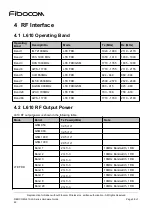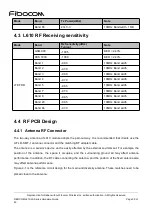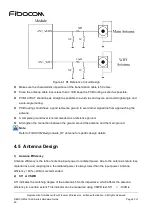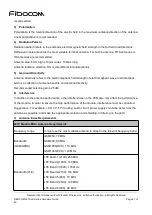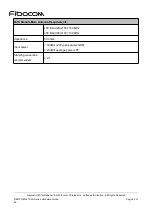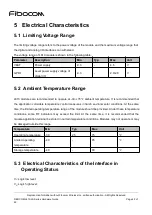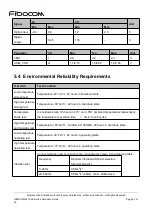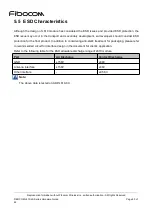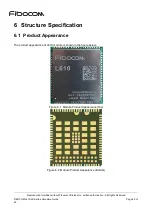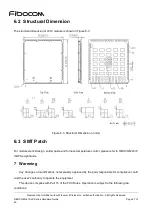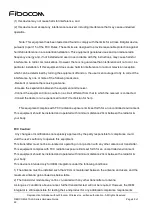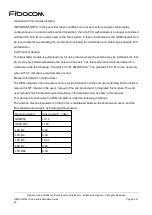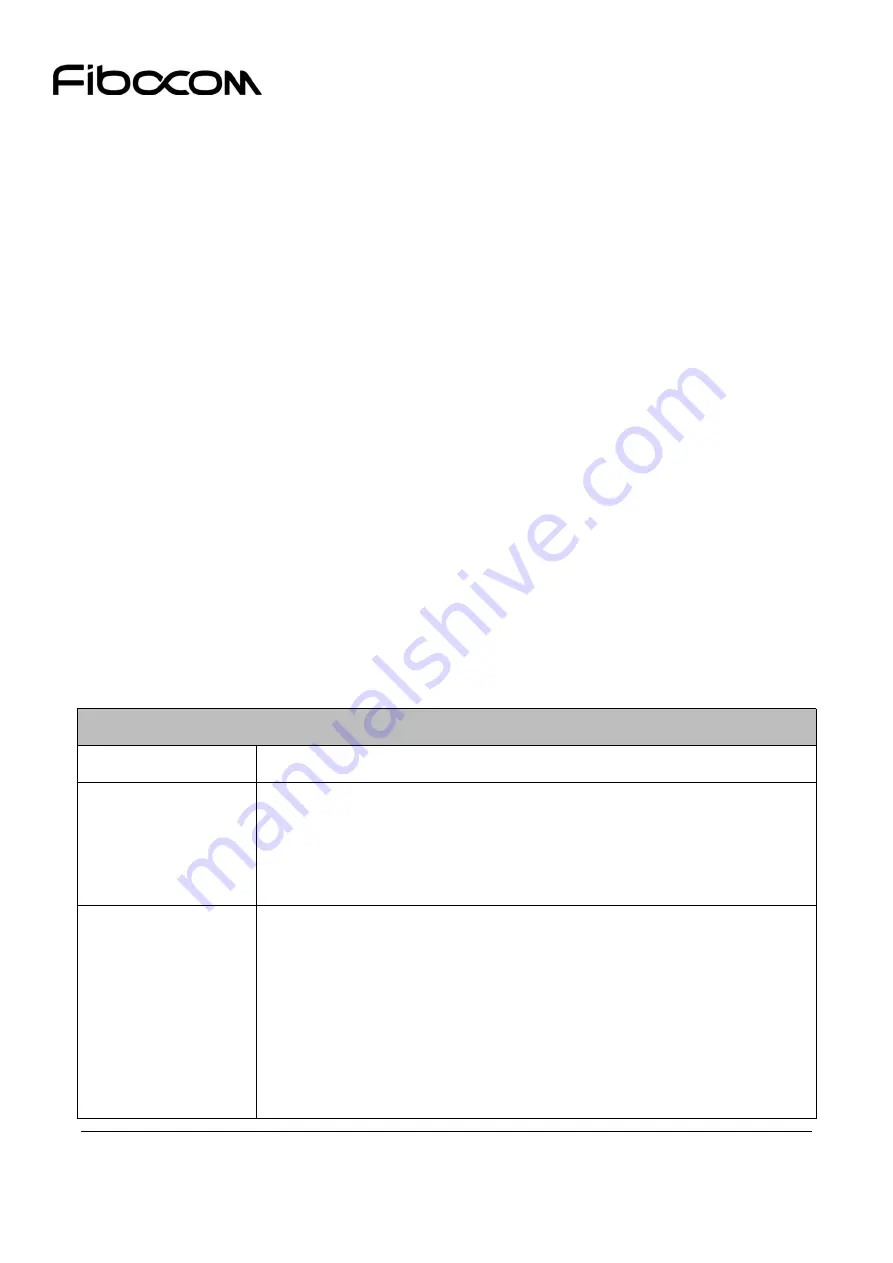
Reproduction forbidden without Fibocom Wireless Inc. written authorization - All Rights Reserved
FIBOCOM L610-LA Series Hardware Guide
Page 41 of
49
recommended.
3) Polarization
Polarization is the rotation direction of the electric field in the maximum radiation direction of the antenna.
Linear polarization is recommended.
4) Radiation Pattern
Radiation pattern refers to the antenna’s electromagnetic field strength in the far field in all directions.
Half-wave dipole antenna is the most suitable terminal antenna. For built-in antenna, PIFA antennas or
IFA antennas are recommended:
Antenna area: 6mm high x 10mm wide x 100mm long.
Antenna radiation direction: Omni_directI/Onal (omnidirectional).
5) Gain and Directivity
Antenna directivity refers to the electromagnetic field strength of electromagnetic wave in all directions.
Gain is a collection of antenna benefits and antenna directivity.
Recommended antenna gain ≤ 2.5dBi.
6) Interference
In addition to the antenna performance, other interferences on the PCB also may affect the performance
of the module. In order to ensure the high performance of the module, interference must be controlled.
Suggestions: For example, LCD, CP, FPC routing, audio circuit, power supply should be as far from the
antenna as possible, and make the appropriate isolation and shielding, or filtering on the path.
7) Antenna Index Requirements
L610 Module Main Antenna Requirements
Frequency range
It must use the most suitable antenna to adapt to the relevant frequency band
Bandwidth
(GSM/GPRS)
GSM850: 70 MHz
GSM900: 80 MHz
GSM1800(DCS): 170 MHz
GSM1900(PCS): 140 MHz
Bandwidth (LTE)
LTE band 1 (2100): 250 MHz
LTE Band 2(1900): 140 MHz
LTE Band 3 (1800): 170 MHz
LTE Band 4(2100): 145 MHz
LTE Band 5 (850): 70 MHz
LTE Band 7(2500): 190 MHz
LTE Band 8 (900): 80 MHz












